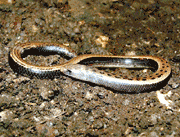|
|||||||||
Way DownstreamIn Chesapeake Country, no one appreciated an unexpected weekend of sunshine more than Clarksborro, N.J., Pvt. Tony Coscia of the Union Army, the rest of his company and the few Johnny Rebs who participated in Civil War Weekend festivities at Capt. Salem Avery House and Museum in Shady Side. They arrived from scattered points of the Mid-Atlantic prepared for the bane of soldiers anywhere: rain with two soggy overnights in their small white tents in back of the Avery House. The weatherman was wrong, and it was a dry reenactment with music, barbecue, crafts for kids and much more. There was much hustle and hoop shirt bustle as the war played out and youngsters joined the Union Army and paraded in a small band under the command of Pvt. Coscia. The boys with a couple of girls mixed in trained with sticks — as young men did in World Wars I and II before the guns were made. Parents watched — much like adults who rode carriages to Bull Run to watch the Army of the Potomac end the budding war — which they didn’t … In Annapolis, the Annapolis Maritime Museum will build five outdoor exhibits celebrating one of the best views of Chesapeake Bay — and 400 years of history at 723 2nd Street in Eastport. From This Spot You Can See Over 400 Years of History uses an $18,600 grant from the Chesapeake Bay Gateways and Watertrails Network to help you imagine our land and water in the years 1600, 1700, 1800, 1900 and 2000. The museum matches the federal grant with its own money and resources, as will the four other recipients of the more than $100,000: Chesapeake Bay Maritime Museum (St. Michael’s); Mason Neck State Park (Lorton, Virginia): Piscataway Park (Accokeek); and Stratford Hall Plantation (Stratford, Virginia). The five projects will show from each site’s perspective how Chesapeake Country has changed throughout history from the American Indian presence, through the voyages of Capt. John Smith and the colonial era, up to today. Chesapeake Bay Gateways and Watertrails Network of 156 refuges, museums, ships, communities and trails works to inspire people to care for Chesapeake Bay and its watershed … Around the country, plastic bag balls teach us eco-lessons. Students in New York have formed a ball — much like a rubber band ball — from 1,000 plastic checkout bags bundled together with twist ties. The plastic sphere, which is 35 pounds and 121⁄2 feet in circumference, represents the accumulation of one year’s worth of plastic bags by the average family of four … Our Creature Feature comes from Brazil, where scientists last reported finding a legless lizard, a new horned toad and a dwarf woodpecker among 14 species described as new to science in a Brazilian Cerrado, which is a vast savannah, threatened by the expansion of soybean fields and development. They also discovered heretofore unknown fish and other creatures, but it was the lizard with no legs that caught our attention. You might be interested to know that legless lizards exist primarily in the Americas, grow two to three feet long, live more than 50 years and will eat your mice for lunch. The Brazilian discovery “resembles a snake due to its lack of legs and its pointed snout, which help it move across the predominately sandy soil,” said Conservation International, the nonprofit that made the announcement. |
|||||||||
|
|||||||||
|
|
|||||||||
|
© COPYRIGHT 2008 by New Bay Enterprises, Inc. All rights reserved.
|
|||||||||
 Volume 16, Issue 19 - May 8 - May 14, 2008
Volume 16, Issue 19 - May 8 - May 14, 2008

